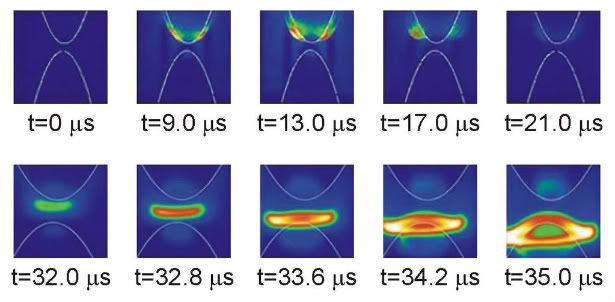I think an insulator generally stops the flow of an electric current, which is different from an electric field (unless I'm mistaken). Best to be careful with terms. The electric field is essentially the electric potential between differing clouds of charge that want to neutralize. It's kind of like having a bunch of positively charged rocks piling up on top of a hill. As some point the pile gets so large that it becomes unstable and an avalanche happens. The pile at the top of the hill, the hill itself and the lack of a pile at the bottom of the hill (somewhere for the pile to go) sets up a certain potential for movement of the pile of charged stuff. That's essentially the electric field in the analogy. Once the pile gets large enough on top of the hill, such that the hill isn't sufficient to hold any more, the pile starts shifting under its won weight and an avalanche happens. The avalanche of the "charged" stuff rolling down the hill equates to the flowing electric current, with the hill and gravity being the analogous "electric field."StefanR wrote:In a way it is possible to say the reverse of diamagnetics. Also a insulator (only of magnetic fields as opposed to the shielding of electric fields by the dielectric). But what creates the conductive path for the discharge?Well, yes, the atmosphere is generally a dielectric (an insulator). Lightning is dielectric breakdown due to electrical field strength (opposing clouds of charges rooted in the cloud and in the Earth; the voltage or electric field strength falls under the purview of electrostatics, I think). Once the charges start moving, we're dealing with an electric current (falling under the purview of electrodynamics). Once the lightning quenches, the atmosphere eventually goes back to a more neutral state acting as an insulator (dielectric) again. That's more or less the self-repairing leaky-capacitor aspect of the Earth. IE, the atmosphere is USUALLY an insulator, unless electric field strength is sufficient to start charges flowing, at which point the atmosphere gets a bit ionized (conductive), a discharge happens (sometimes several discharges happen once one or more conductive paths are opened up), and then the ionized channel dissipates, neutrals rush back in, and the "leak" in the capacitor's dielectric is fixed.
Perhaps not the best example, but hopefully illustrative?
IE, the electric field is a result of electrostatics (stationary charges; the pile of rocks at the top of the hill, andthe lack of rocks at the bottom of the hill). The electric current is a a motion of the charged particles due to the potential energy of the clouds of charged particles being converted into kinetic energy. At that point it falls under electrodynamics or the actions of particles in motion with respect to each other.
As to what causes the breakdown, it's hard to say, it seems to me like at some point the electric field strength becomes so great that it forces whatever charged particles are available to start moving through the dielectric. It may be that the motion causes collisions that knock around other atoms to he point of ionization, and you get a runaway breakdown effect where this flow start ionizing more material at the front, kind of like an electric shockwave ionizing the otherwise neutral atmosphere as it goes, and creating a channel through which the charges can flow. All of this happens rather quickly once it starts. As show in high-speed footage of lightning strikes...
In an electric field, positive charges in a current will tend to flow one way, while negative charges will tend to flow the other.
(Which Way Does the "Electricity" Really Flow?)
http://amasci.com/amateur/elecdir.html
So, I'm assuming that once the electrical leader stroke ionizes the material, the electrons knocked loose go one way, and th positively charged ions will tend to go the other...
So, yeah, that's how I perceive the interaction to go. Feel free to correct me, anyone, if I've buggered anything up.
Regards
~Michael Gmirkin
